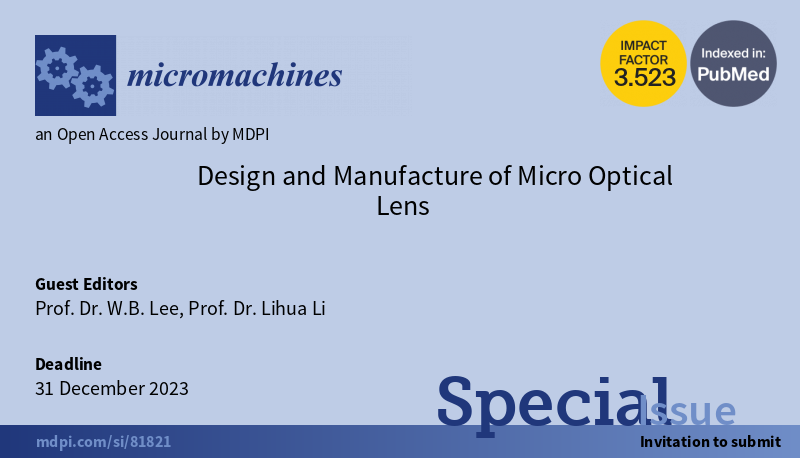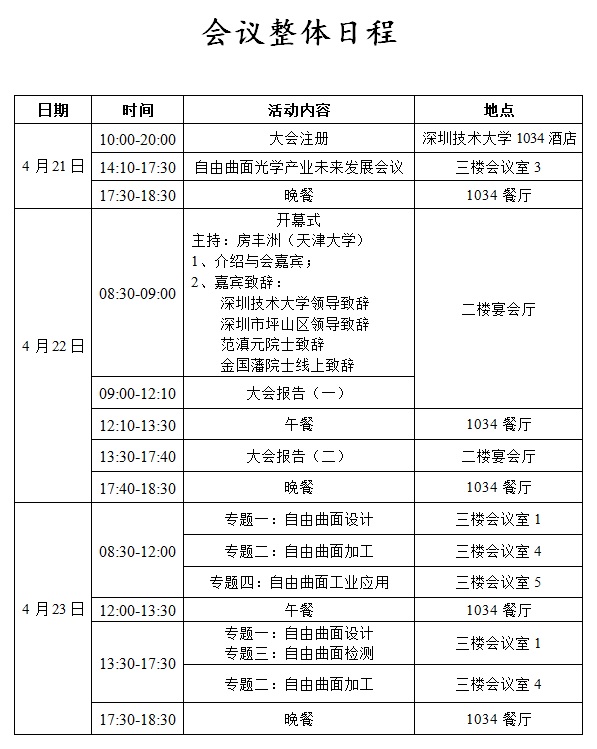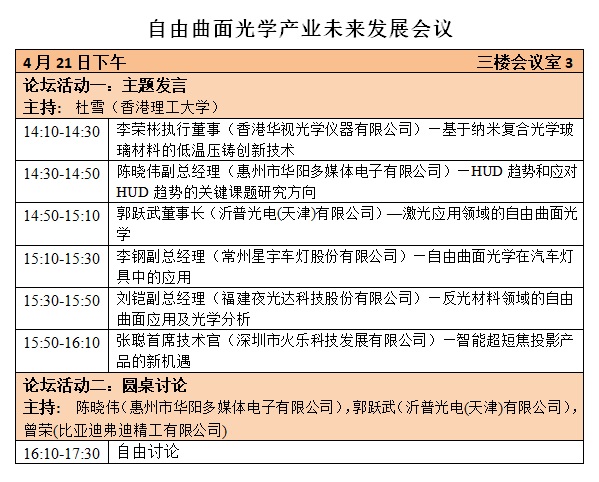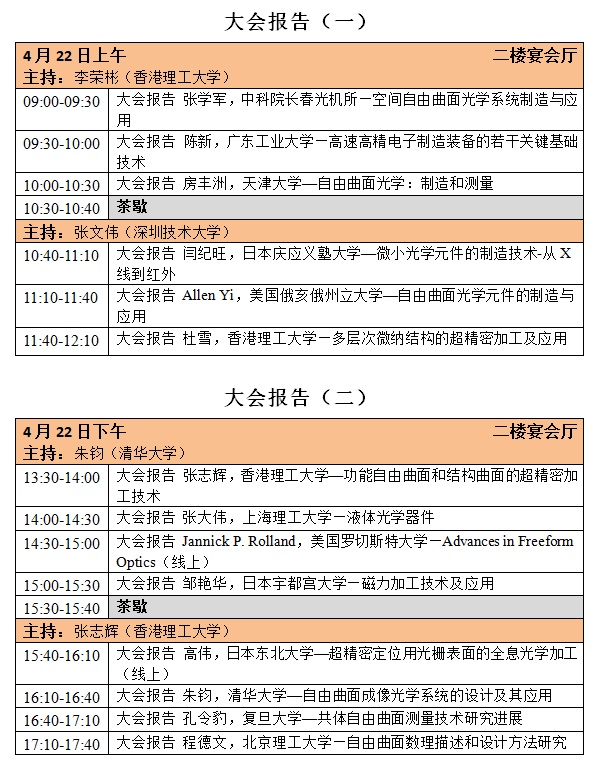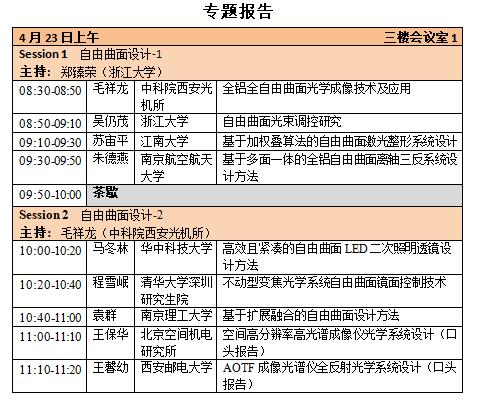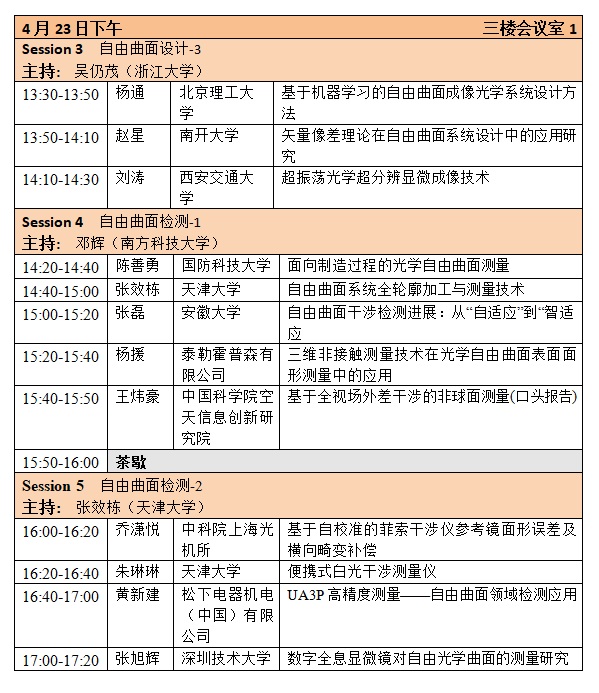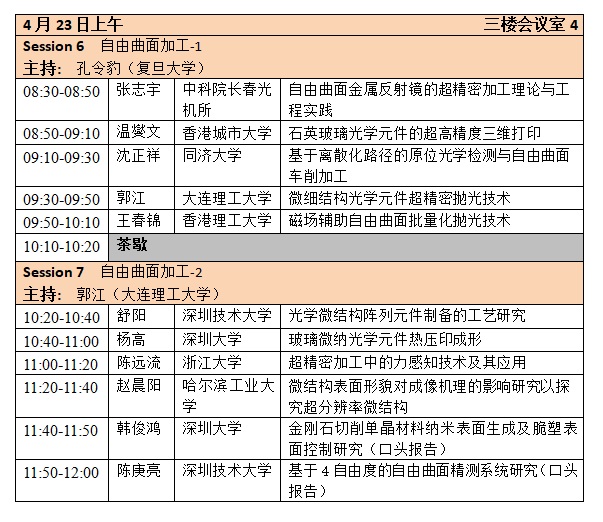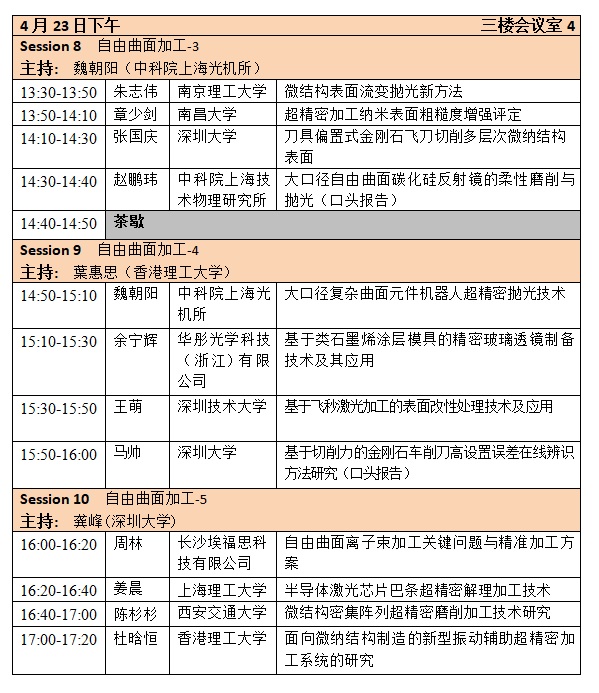Home
Welcome
"The Third International Conference on Freeform Optics and Application Technology"will be held in April 2023 in Shenzhen. Participate in FOAT2021, you will see the latest researches and developments in the field of Freeform Optics and Application Technology.
On behalf of the Organizing Committee, we warmly invite Freeform Optics scientists, engineers, technicians, enterprisers, graduate students and people simply interested in the technique to attend this unique and innovative conference.
Honorary Chairs
 Guofan JIN Tsinghua University |
 Songlin ZHUANG University of Shanghai for Science and Technology |
 Jiubin TAN Harbin Institute of Technology |
 WB LEE The Hong Kong Polytechnic University |
 Fengzhou FANG Tianjin University |
General Chair
 Shuangchen RUAN
Shenzhen Technology University
|
General Co-Chairs(Sorted by the alphabetical order of surname)
 ChiFai CHEUNG The Hong Kong Polytechnic University |
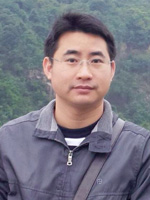 Lingbao KONG Fudan University |
 Jun ZHU Tsinghua University |
Local Organization Chair
 Wenwei ZHANG
Shenzhen Technology University
|
Executive Chair
 Lihua LI
Shenzhen Technology University
|


